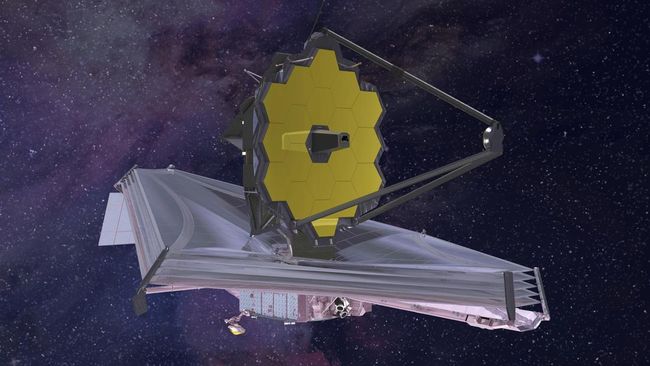US Aeronautics and Space Administration (NASA) revealed the James Webb Space Telescope (JSWT) experienced a collision with a meteoroid on Wednesday (8/6). This is JSWT’s fourth collision incident in the six months following its launch.
Collect SpaceThe telescope, which was released into space on Christmas 2021, has spent months exploring outer space for scientific observations.
NASA said it would unveil the telescope’s first high-quality scientific images on July 12.
Before that happened, NASA said James Webb had a collision with a small piece of space debris called a micrometeoroid. However, the organization confirmed the incident did not have a serious impact on the telescope.
“Since launch, we’ve had four measured micrometeoroid strikes that were smaller than we anticipated. And recently (the telescope was hit by a micrometeoroid) that was larger than we thought,” said Lee Feinberg, Webb’s optical telescope element manager at the Center for Space Flights. Goddard NASA in Maryland.
The most serious impact of the collision occurred between May 23 and May 25 as it affected the C3 segment of the 18 gold-plated hexagonal main mirrors.
According to NASA, all spacecraft are expected and designed to sense and withstand micrometeoroid impacts, including JWST. Observatory engineers even sampled real-impact mirrors to understand how such an event could affect the mission.
However, the meteoroid impact this time was larger than what was modeled or could be tested by personnel in the field. Even so, NASA officials believe that the US$10 billion telescope and its scientific data and schedule are not affected by the incident.
“We knew that Webb would have to deal with an extraterrestrial environment, which includes harsh ultraviolet light and charged particles from the sun, cosmic rays from exotic sources in the galaxy, and occasional micrometeoroid strikes within our solar system,” said Paul Geithner, engineering deputy project manager. at NASA Goddard, quoted from Live Science.
“We designed and built the Webb with optical, thermal, electrical, mechanical performance margins to ensure it can carry out ambitious science missions even after years in space.”
Some impacts of collisions with micrometeoroids are actually predictable, such as when a meteor shower came by directing the JWST optical system to safety. However, this latest incident was unrelated to the meteor shower and was considered an “unavoidable coincidence.”
After impact, engineers individually adjusted the observatory’s 18 main mirror segments to keep them properly tuned overall.
(ttf/arh)
–


